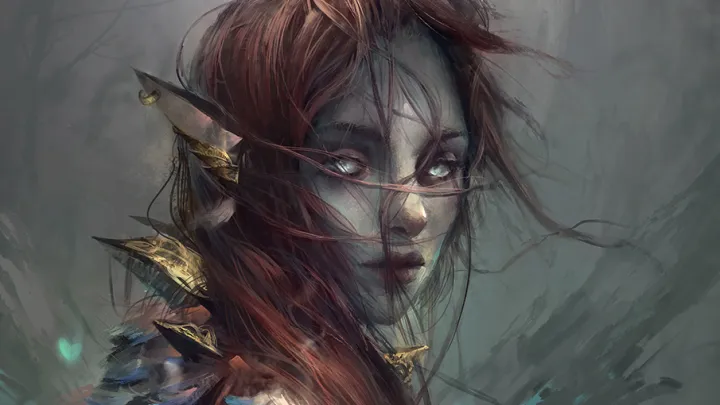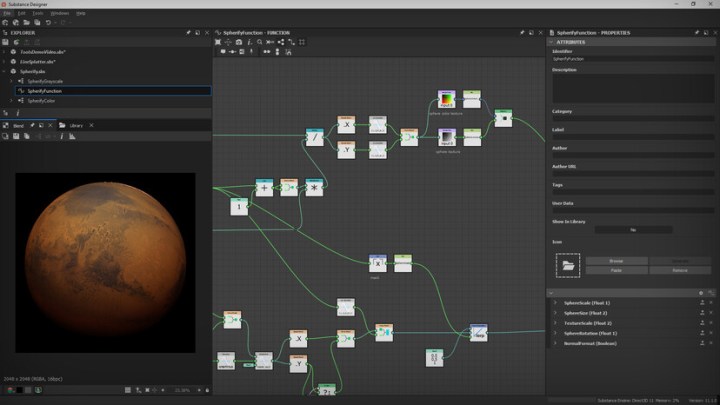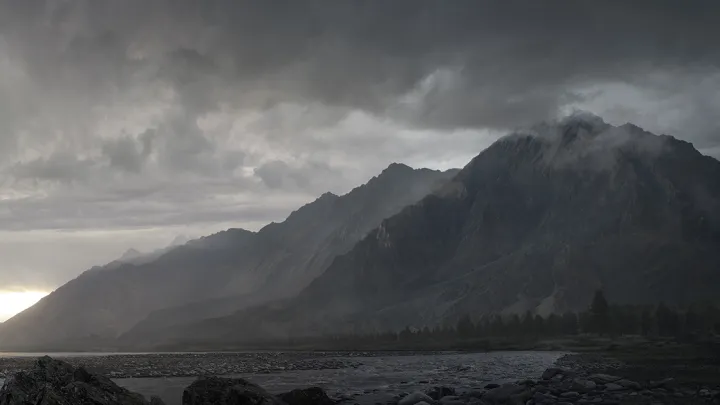Creating a Subsurface Scatter Material in Substance Designer with Enrico Tammekänd
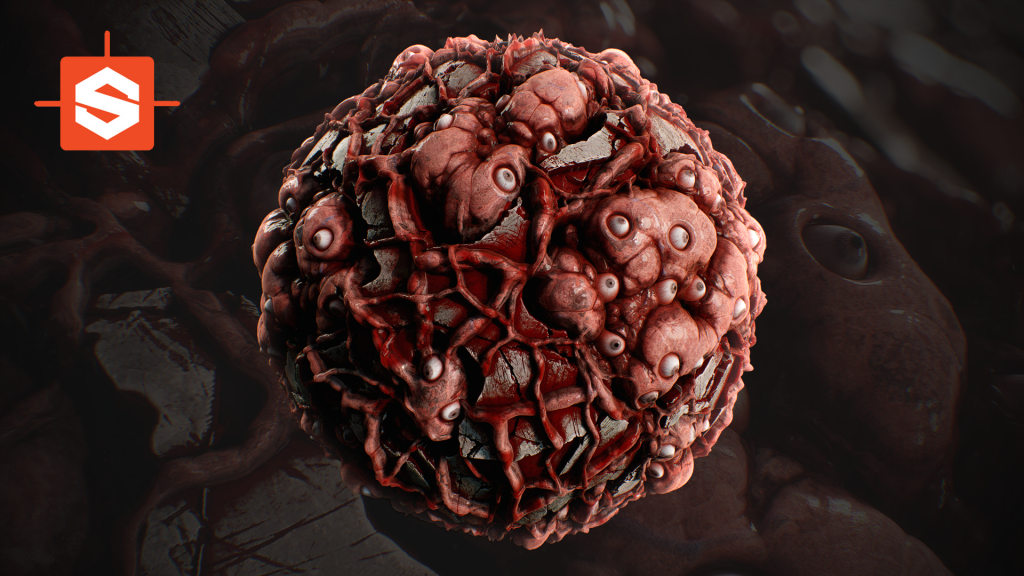 Learn how to create an organic-looking material in Substance Designer on ArtStation Learning with Enrico Tammekänd. The course tackles how to separate materials and add contrast between two surfaces while making them feel cohesive. The horror-themed tutorial also walks through how to use Subsurface Scattering in Marmoset Toolbag and Tammekänd’s technique for achieving great results.
Learn how to create an organic-looking material in Substance Designer on ArtStation Learning with Enrico Tammekänd. The course tackles how to separate materials and add contrast between two surfaces while making them feel cohesive. The horror-themed tutorial also walks through how to use Subsurface Scattering in Marmoset Toolbag and Tammekänd’s technique for achieving great results.
Enrico Tammekänd is a self-taught material and environment Artist from Estonia, Pärnu. He has been learning game art on his own for 10 years and enjoys sharing the knowledge he’s acquired over time. Enrico founded his own game development studio, Enthelity, and has worked with multiple indie studios and companies like Ubisoft and CGTextures. Currently, he is at Counterplay Games as an Environment Artist working on the upcoming PS5 game, Godfall.
In this interview, Enrico shares details about his experience, advice, techniques, and more.
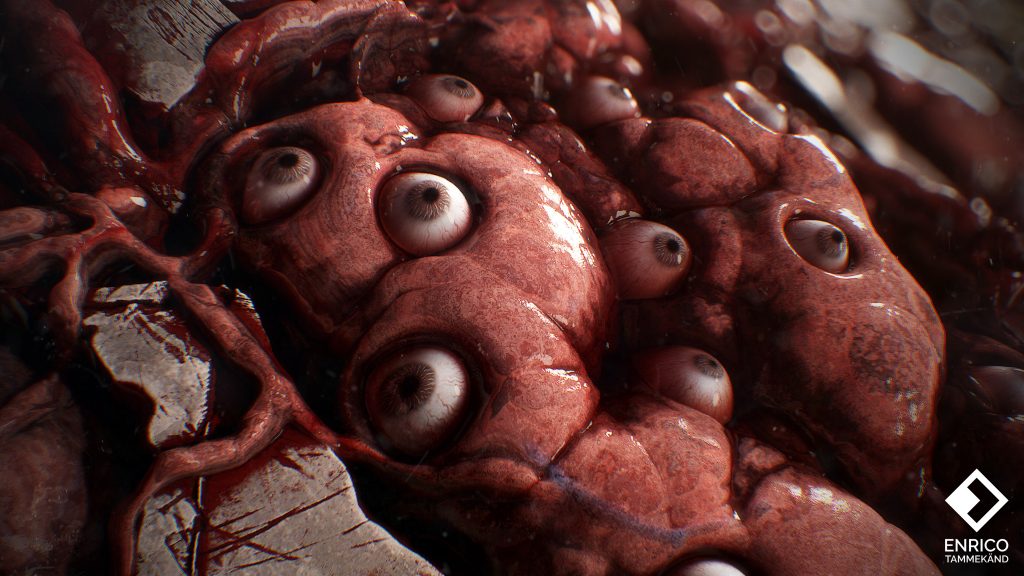
Behind the course:
I have always loved horror movies and games as they evoke such a wide range of emotions. It has always intrigued me how and why. My road into the game development industry started out with an accidental hobby to try and develop my own horror game that I always dreamed about. Since there are so many technical knowledge and art skills required, I started to learn how to make that game happen on my own. As this is still something that I want to do in the near future, I keep myself motivated to make that dream come alive one day.
Throughout my time in the industry, I have always been inspired by horror. Whenever I’ve been given artistically freedom to choose what to do, I tend to pick up something from that category. That is why we did a horror-themed pack at Dekogon and Substance Signature for “Fantasy Battlefield” for the fight between good and evil. Since I have done similar materials before, I saw a perfect opportunity to challenge myself and also at the same time give back to the community with some techniques that I use in my everyday work. I’m really glad to have already seen some amazing artworks created through this tutorial!
The inspiration for the material came from one of the talented Chris Hodgson who’s tutorials helped me learn Substance Designer. It makes me really happy to be able to provide something similar to other people now! I wanted to try and showcase some new workflows and techniques that I discovered within the new updates that can be useful to anyone from beginner level to advanced. The tutorial is for anyone who knows even just the basics of Substance Designer.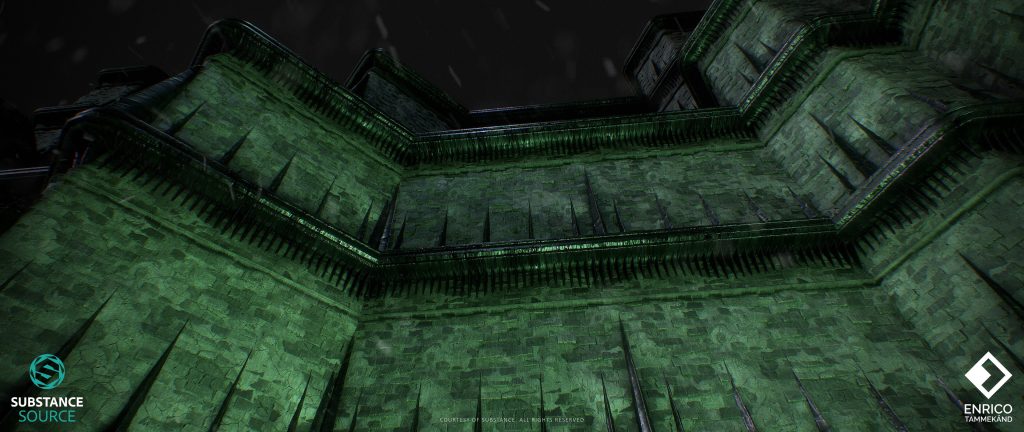
Most memorable learning experience:
Working at Counterplay Games has been one of the most memorable learning experiences of my career. We are given access to different areas to better ourselves and. are not limited to what our job titles say. While I focus mostly on material creation, I get to try out more technical things in the engine itself and find solutions to problems with help from the team.
I believe it is very important to find a suitable work environment for any artist. You should be able to ask questions whenever there is a chance to learn. It has given me more knowledge to ask questions and try out tasks that I never thought I’d be able to tackle. I’d suggest to try out different areas at least once and be aware of what is being done with the artworks that you develop. From there, you will be able to expand your skillset by understanding the tools that you as an artist are developing for anyone who uses them in the production.
1 piece of advice:
I’m going to suggest something simple – don’t give up! To perfect your art, it takes time. Not just a few hours. Just this tutorial took months to make as I re-created the material multiple times until I recorded it. I tried out countless versions and did a lot of trial and error until I was able to call it ready to be shown to others. Everyone makes mistakes and nobody should be afraid of that but rather adapt and learn.
What I want to say is that everyone can struggle with art creation. But, being persistent and taking the time to process what works and what doesn’t, learning how to improve and jump back into it with a new mindset makes a whole lot of difference for quality and actually finishing your artwork.
Mastering the technique:
I would say that making every part of the material elements feel cohesive is one of the most difficult techniques to master. For example, it is fairly easy and fast to create a brick pattern but making the material believable with the mortar, dirt and broken edges is very difficult as each area has different values for color, reflections, and overall surface feel.
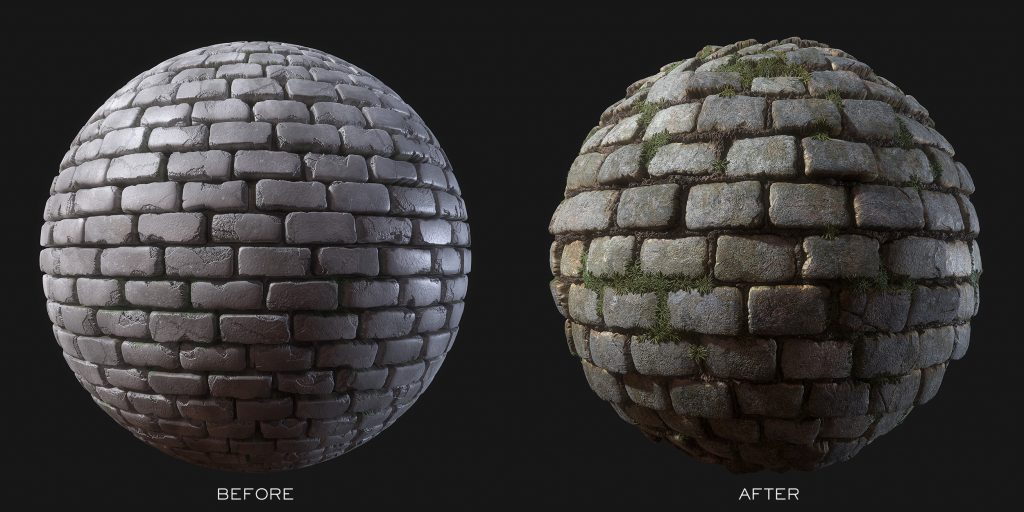
That is why it’s very important to gather references and understand why bricks use mortar and not grout. You need to know what they consist of, how they are used, and how they react to actual real-world environments and lighting. With every new artwork, these skills start to improve very fast. There is no need to know everything about every surface. However, it’s important to follow the realism of our surrounding world and make sure each element has a part to play in the material.
ArtStation Learning courses are included in all ArtStation premium subscriptions. Find out more >
See more of Enrico’s work here.




















